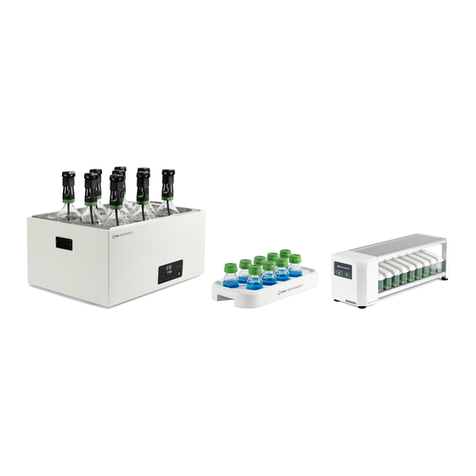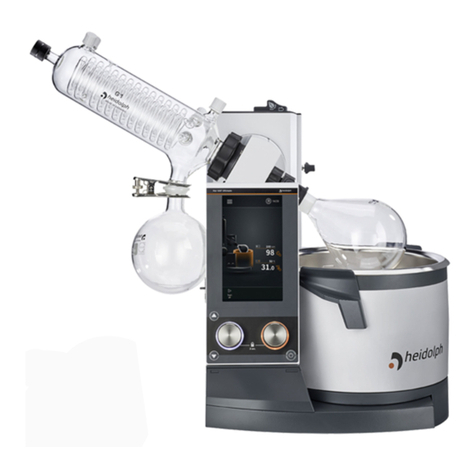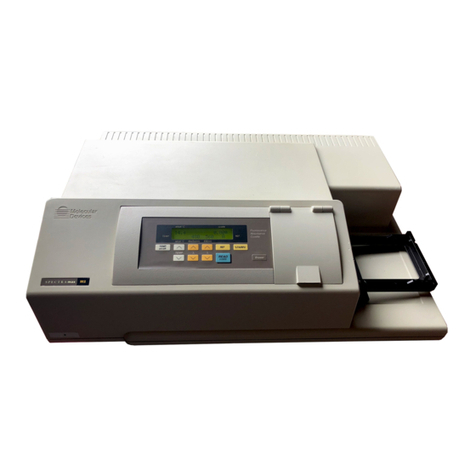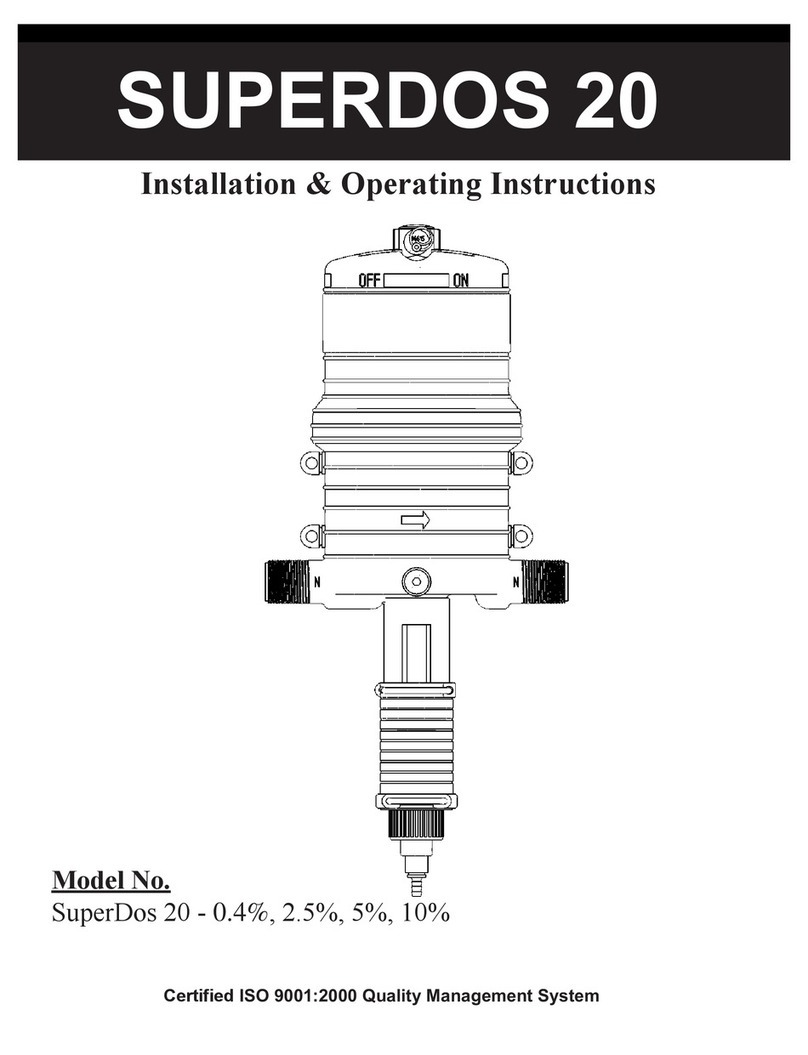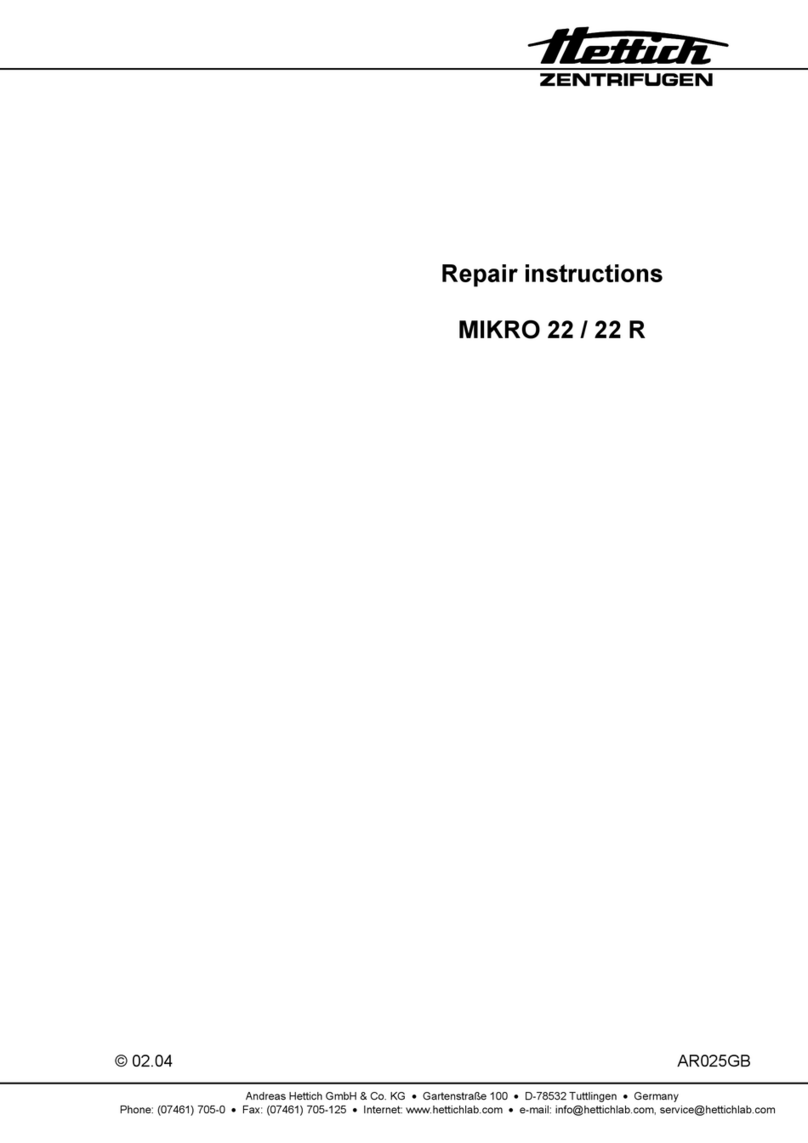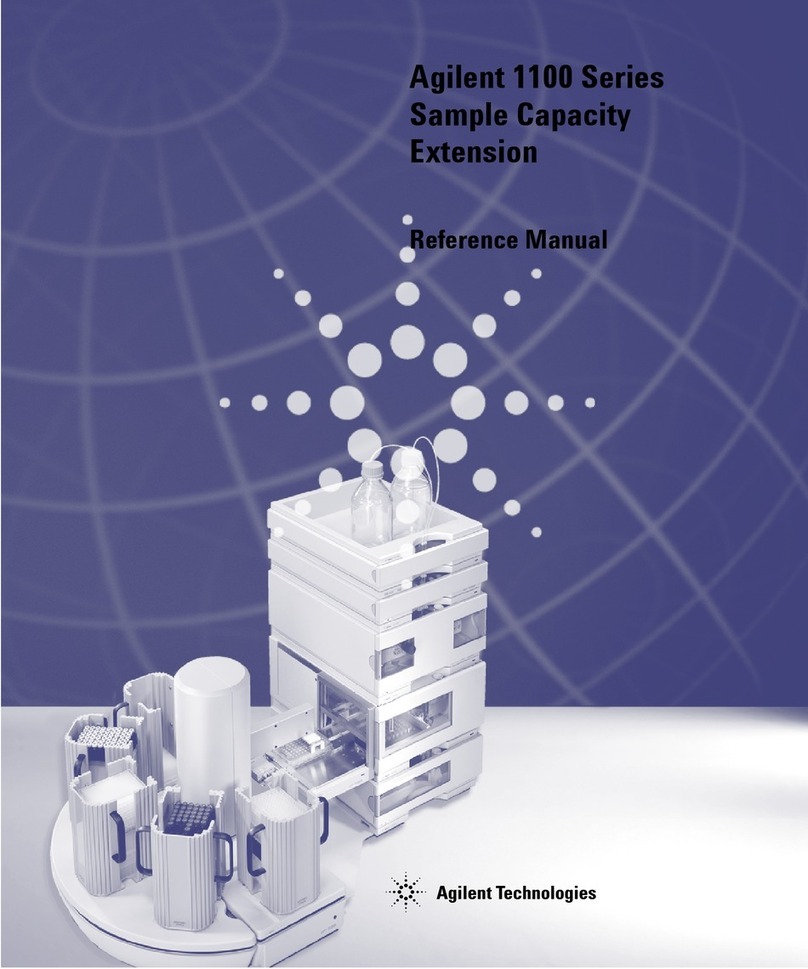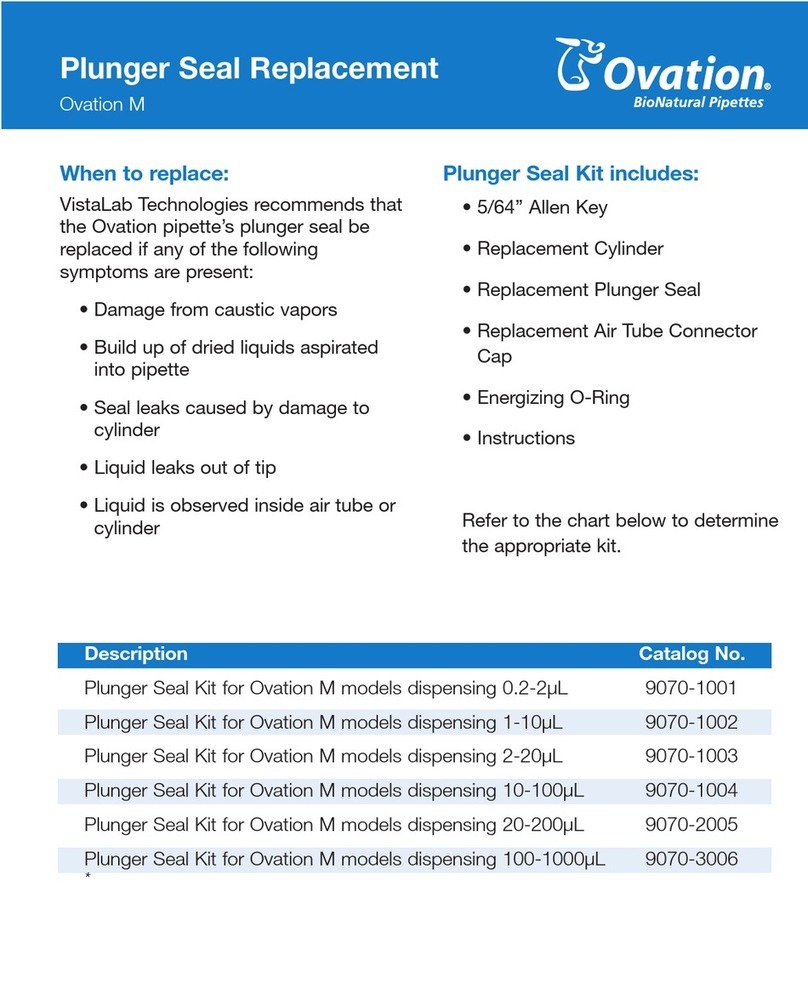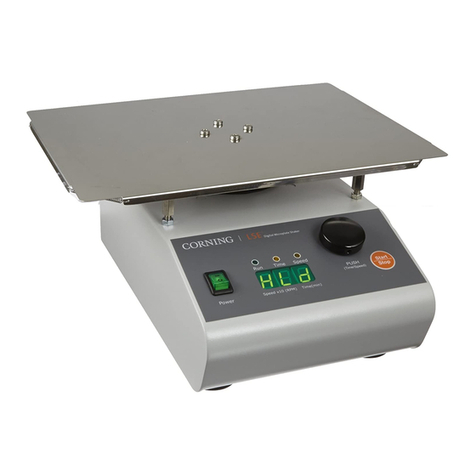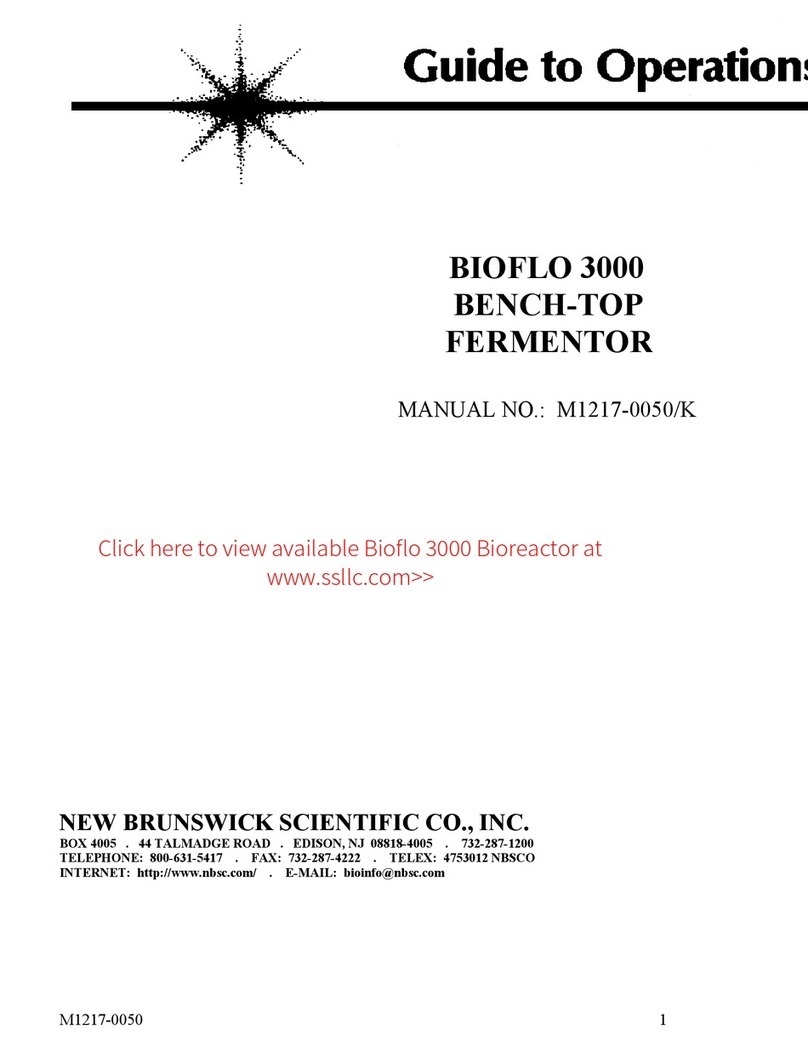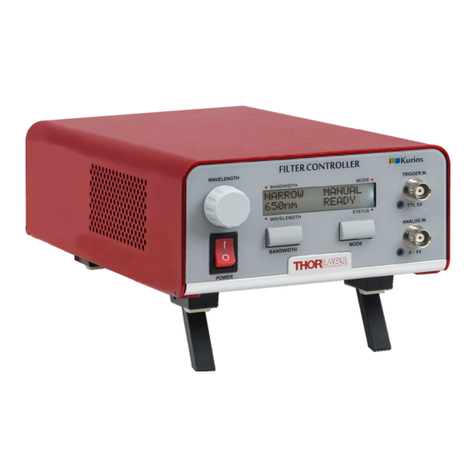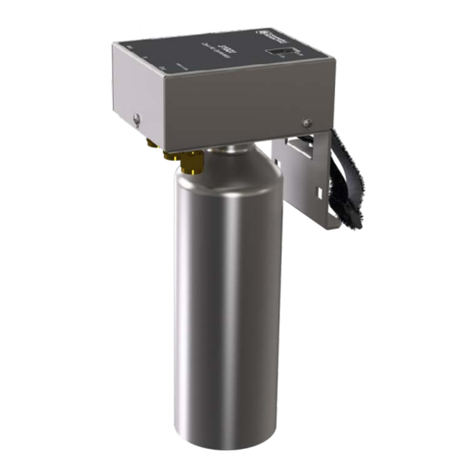BPC instruments BPC Blue User manual

s
www.bpcinstruments.com
Mobilvägen 10, 223 62 Lund, Sweden
Contact Us :
+46 (0)46 163950
OPERATION AND
MAINTENANCE MANUAL
BPC Blue
Analytical Platform for Biodegradability Analysis

2
Version 1.0 June 2023
The latest version of this manual can always be provided upon request:
Any questions related to this document should be directed to:
BPC Instruments AB
Mobilvägen 10
SE-223 62 Lund
Sweden
Telephone: +46 (0)46 163950
Email: [email protected]
Web: https://www.bpcinstruments.com
This document contains proprietary information protected by copyright. No part of this
publication may be redistributed in any form whatsoever or translated into any language
without prior, written permission of BPC Instruments AB.
© 2023 BPC Instruments AB. All rights reserved.
Produced in Sweden.

3
LIST OF CONTENTS
General Information……………………………………………………………………………………………….
4
Chapter 01: Overview…..…………………………………………………………………………………………
6
Chapter 02: BPC Blue Configurations and Components…………..………………………………
8
2.1 Anaerobic Biodegradability Analysis……………………………………………………
8
2.1.1 BPC Blue Anaerobic (Default System)………………………………………….
9
2.1.2 BPC Blue Anaerobic Light…………………………………………………………….
10
2.1.3 BPC Blue Anaerobic DUO…………………………………………………………….
12
2.1.4 BPC Blue Anaerobic Light DUO……………………………………………………
13
2.2 Aerobic Biodegradability Analysis…………………………………………………………
15
2.2.1 BPC Blue Aerobic (Default System)………………………………………………
18
2.2.2 BPC Blue Aerobic Light…………………………………………………………………
19
2.3 BPC Blue Premium……………………………………………………………………………….
20
2.3.1 BPC Blue Premium (Default System)…………………………………………….
20
2.3.2 BPC Blue Premium Light……………………………………………………………….
21
2.3.3 BPC Blue Premium DUO………………………………………………………………
23
2.3.4 BPC Blue Premium Light DUO………………………………………………………
24
Chapter 03: Equipment Description – Installation and Operation……………………………
25
3.1 BPC Blue Anaerobic Systems……………………………………………………………….
25
3.1.1 Equipment Description……………………………………………………………….
25
3.1.2 Setting up the Instrument………………………………………………………….
28
3.2 BPC Blue Aerobic Systems……………………………………………………………………
34
3.2.1 Equipment Description……………………………………………………………….
34
3.2.2 Setting up the Instrument………………………………………………………….
35
Chapter 04: BPC Blue Web-based Software…………………………………………………………….
36
4.1 Computer Network Configuration………………………………………………
36
4.2 Network Quick Guide………………………………………………………………….
37
4.3 Aurora™ Software Description……………………………………………………
37
Chapter 05: Maintenance and Spare Parts………………………………………………………………
45

4
GENERAL INFORMATION
Before operating the BPC Blue (hereafter referred to as “the instrument”, “the system” or “the equipment”
interchangeably) from BPC Instruments AB (hereafter referred to as “BPC Instruments”, “BPC”, “Bioprocess
Control” or “BPC Instruments AB” interchangeably), carefully read this operator manual for the instrument, any
separate instructions for other equipment used together or in conjunction with the instrument, as well as the
safety instructions for any and all chemicals used in the process of utilising the instrument.
Safety Information
When performing experiments with the instrument, always use protective eyewear, gloves, and lab coat. Always
make sure there is adequate ventilation and take proper precautions when handling electrical devices near
water or explosive gases. Make sure to tie back any hanging objects, such as hair and clothing, when working
near rotating or other moving parts.
Do not modify the instrument without the prior consent of the manufacturer. BPC Instruments AB do not assume
responsibility for any errors due to equipment modification.
Do not clean or service the instrument while it is running.
Do not expose the instrument to mechanical vibrations or high frequency radio transmissions.
Never operate the instrument in a way it was not intended.
Never operate the instrument or let anyone else operate it without proper training.
Never use the instrument outside or in environments with parameters outside of the instruments recommended
range.
Never connect additional electrical equipment not supplied by BPC Instruments AB for the express purpose of
using with the instrument. This is true even if the connections can mate.
Always back-up important data to an external device.
Always keep the instrument level and on a flat and stable surface. Failing to do so can, among other things,
generate an erroneous gas reading.
Always make sure all safety guards are in place and working before operating the instrument.
Always make sure that all parts are functioning properly immediately after start-up.
Always keep the instrument clean.
Always make sure to have access to relevant chemicals before starting an experiment.
Always dispose of parts and chemicals according to applicable rules in the country of usage.
Periodic maintenance of the instrument and its various accessories is essential. Always make sure they are in
working condition. If service or spare parts are required, please visit https://webshop.bpcinstruments.com or
contact BPC Instruments AB directly or one of its representatives.
Always make sure to connect the power supply so that it is easy to remove from the mains power outlet and so
it doesn’t risk becoming damaged.

5
Always make sure that the gas outlet of the Flow Cell Unit (FCU) is able to release pressure in the event of
pressure build-up inside of the instrument. Do not obstruct or block it.
Always wait 60 seconds between powering the system on and off. This will allow for the operating system to
shut down properly and for the capacitators to properly cycle.
Always use deionized water to minimise the risk of residue or rust forming on the inside of the FCU.
Limited Warranty
The product warranty provided with the instrument corresponds to the stipulations in Orgalime S 2012, unless
otherwise agreed upon with BPC Instruments AB. BPC Instruments AB reserves the right to correct any possible
errors, mistakes, changes, updates, technical data or otherwise relevant information in this manual or any other
documents, where applicable by law.
Electrical Safety
Compliance is required with respect to voltage, frequency and current requirements indicated on relevant parts.
Improper operation, damage to the equipment, fire or otherwise undesired effects might be caused by
connecting to a different power source. There are no user-serviceable parts in the equipment, unless otherwise
agreed upon with BPC Instruments AB.
Before Getting Started
Read this manual before installing and using the instrument. In addition, keep this instruction manual for future
reference and make sure it is easily available for people who regularly use the system.
Contact Information
BPC Instruments
Mobilvägen 10
223 62 Lund
Sweden
E-mail: sales@bpcinstruments.com
Phone: +46 (0)46 163950
Website: https://www.bpcinstruments.com
Webshop: https://webshop.bpcinstruments.com
Swedish organisation number: 556687-2460

6
Chapter 01: Overview
Biodegradability of plastics refers to the process by which microorganisms break down the
organic material (polymer) to its basic elemental components (water, biomass and gas). It is
a complex biological process reliant on several critical factors, including the chemical and
physical properties of the test material (e.g., polymer chain length and strength of
interactions, surface area, etc.), environment (e.g., soil, compost, water, presence of
microorganisms, etc.) and conditions (e.g., temperature, humidity, dynamic or static
incubation, etc.).
The central focus of biodegradability studies is determining the degree and rate to which a
given polymer can biodegrade. In laboratory settings, this question can be answered by
evaluating the biodegradation properties of the tested material considering a specific type of
environment under a well-defined set of conditions.
BPC Blue platform represents the next generation of our analytical tools for conducting
biodegradability analyses under anaerobic and aerobic conditions. This system delivers
precise and accurate gas measurements, enabling the determination of biodegradation rate
and real-time kinetic information of the biodegradation process of any plastic materials.
BPC Blue system has been specifically designed to implement and control a wide range of
standard laboratory conditions in accordance with several international protocols, providing
a thorough and reproducible evaluation of the biodegradation properties of polymers. Its
advanced capabilities offer fundamental insights into the biodegradability of a given material,
enabling users to conduct comprehensive analyses of the biodegradation process and its
underlying mechanisms.
Compared to the previous instrument offered by BPC Instruments for biodegradability
studies, Gas Endeavour, BPC blue retains the following key features:
¨ Fully automated setup for sampling, recording, data analysis and report generation.
¨ Standalone instrument with embedded data acquisition and web server for remote
access (no need for software installation).
¨ The measuring cell is pre-calibrated by the factory.
¨ The software can be accessed locally or remotely from any device with a web browser
(preferably Google Chrome). System log for operational diagnosis.
¨ Option for real-time automatic compensation for atmospheric pressure,
environmental temperature and moisture content changes to normalise the data to
standard conditions.
¨ Reliable operation and easy maintenance where most of the components can be easily
exchanged without special requirements.

7
The following are the main new features of BPC Blue:
¨ Default setup with 18 channels.
¨ New software dedicated to biodegradability analysis.
¨ New configurations for anaerobic and aerobic tests (Light, DUO and Premium).
¨ New electronic hardware with significantly improved performance and additional
functionalities.
¨ 150 higher volume detection capacity compared to the previous version.
¨ New thermostatic water bath with capacity for 18 (1 L) reactors or 9 (2 L) reactors.
¨ New detection unit (BPC Core Unit) with OLED screen to easy access the status and IP
address of the instrument, USB port for software upgrade and power button.
¨ More robust and less gas permeable tubing.
¨ Various accessories for better tube management and easier operation.
¨ New Gas Absorption Attachment (GAA) material more resistant at high temperatures
(aerobic tests).

8
Chapter 02: BPC Blue Configurations and Components
2.1 Anaerobic Biodegradability Analysis
Under anaerobic conditions (absence of oxygen), biodegradable materials are converted into
methane (CH4), carbon dioxide (CO2), water (H2O) and biomass:
Cpolymer CH4 + CO2 + H2O + Cbiomass
Anaerobic biodegradability analysis is based on biogas (CH4 + CO2) measurements considering
different types of environment, such as aqueous medium, controlled slurry digestion system
and high solid digestion conditions. In this case, the biodegradation rate of plastic materials
is measured by a combination of evolved carbon dioxide and methane gases as percentage of
the conversation of carbon in the plastic sample to carbon in the gaseous form.
The first step in calculating the biodegradation rate of the investigated material under
anaerobic conditions, is to determine the amount of gaseous carbon (Cg) evolved from each
reactor. Using the ideal-gas equation, the volumes of CH4 and CO2 are converted to volumes
at standard conditions of temperature (273 K) and pressure (1 013,25 hPa):
Where,
p is the pressure in hectopascal (hPa)
V is the volume in L
T is the temperature in Kelvin (K)
The volume of biogas evolved needs to be adjusted to determine the corresponding amount
of gaseous carbon released, employing the standard equation: 22,4 mL of biogas at standard
conditions = 12 mg of Cg.
The recorded volumes are also adjusted to account for variations in water vapor pressure and
atmospheric pressure that may have occurred during the test.
To calculate the average net amount, in grams, of gaseous carbon released during the
anaerobic biodegradation of the test material, subtract the average amount, in grams, of
gaseous carbon evolved in the three replicates of the test material from the average amount,
in grams, of Cg evolved in the blank samples (three replicates). The biodegradation rate can
be calculated using the following equation:

9
Where,
mC,g is the amount of gaseous carbon evolved, in grams.
MC,i is the amount of carbon initially in the test material, in grams.
BPC Blue Anaerobic is suitable to perform tests in accordance with various standard protocols
(Table 1):
Table 1. Examples of standard protocols that can be performed using BPC Blue Anaerobic System.
Protocols
Description
Environment
ISO 11734
Water quality — Evaluation of the "ultimate" anaerobic
biodegradability of organic compounds in digested sludge — Method
by measurement of the biogas production.
Slurry digestion
ISO 13975
Plastics — Determination of the ultimate anaerobic biodegradation of
plastic materials in controlled slurry digestion systems — Method by
measurement of biogas production.
Slurry digestion
ISO 14853
Plastics — Determination of the ultimate anaerobic biodegradation of
plastic materials in an aqueous system — Method by measurement
of biogas production.
Aqueous
medium
ISO 15985
Plastics — Determination of the ultimate anaerobic biodegradation
and disintegration under high-solids anaerobic-digestion conditions
— Method by analysis of released biogas.
High solid
digestion
ASTM D5210
Standard test method for determining the anaerobic biodegradation
of plastic materials in the presence of municipal sewage sludge.
Slurry digestion
ASTM D5511
Standard test method for determining anaerobic biodegradation of
plastic materials under high-solids anaerobic-digestion conditions.
High solid
digestion
ASTM D5526
Standard test method for determining anaerobic biodegradation of
plastic materials under accelerated landfill conditions.
High solid
digestion
OECD 311
Anaerobic biodegradability of organic compounds in digested sludge:
By measurement of gas production.
Slurry digestion
2.1.1 BPC Blue Anaerobic (Default System)
The default configuration of the BPC Blue Anaerobic System (Figure 1) includes all the
necessary components to conduct biodegradability studies under anaerobic conditions. The
components are listed below:

10
Figure 1. BPC Blue Anaerobic Complete System.
Unit A – Incubation Unit
18 glass reactors (1 L)
1 motor controller signal cable
1 MCU power adapter
18 brushless DC motors
1 motor power splitter
18 axis couplings for brushless
DC motors
1 thermostatic water bath
1 base tray
19 brushless DC motor cables
250 mm (15 units)
500 mm (3 units)
1500 mm (1 unit)
18 stirrers GL 45 (1 L) standard
1 thermostatic water bath lid
for 18 reactors (1 L)
1 motor controller unit (MCU)
18 push-in valves 6 mm
Unit B – BPC Core Unit
1 BPC Core
36 check valves
1 main unit power adapter
18 flow cell units (FCUs)
1 plastic syringe
1 ethernet cable
Additional Components
1 Festo tubing 50 m
36 push-in connectors 6 mm
1 bottle/tube opening tool
1 funnel
12 soft binders 7/180 mm
FCU volume sheet
18 tubing stoppers
36 multi-coloured marker clamps
2.1.2 BPC Blue Anaerobic Light
The light version of BPC Blue Anaerobic has the same features and functionalities as the
default system, but with a reduced number of channels and different size of reactors. BPC
Blue Anaerobic Light (Figure 2) comes with 9 channels and 2 L reactors.

11
Figure 2. BPC Blue Anaerobic Light Complete System.
Unit A – Incubation Unit
9 glass reactors (2 L)
1 motor controller signal cable
1 MCU power adapter
9 brushless DC motors
1 motor power splitter
9 axis couplings for brushless
DC motors
1 thermostatic water bath
1 base tray
10 brushless DC motor cables
250 mm (6 units)
500 mm (3 units)
1500 mm (1 unit)
9 stirrers GL 45 (2 L) standard
1 thermostatic water bath lid
for 9 reactors (2 L)
1 motor controller unit (MCU)
9 push-in valves 6 mm
Unit B – BPC Core Light Unit
1 BPC Core
18 check valves
1 main unit power adapter
9 flow cell units (FCUs)
1 plastic syringe
1 ethernet cable
Additional components
1 Festo tubing 50 m
18 push-in connectors 6 mm
1 bottle/tube opening tool
1 funnel
6 soft binders 7/180 mm
FCU volume sheet
9 tubing stoppers
18 multi-coloured marker clamps
Both systems operate on a mechanism that is based on biogas measurements (Figure 3):
Figure 3. BPC Blue Anaerobic measures biogas produced by the biodegradation of plastic materials.

12
The FCU has 2 possible resolutions, 9 mL and 2 mL for low and ultra-low gas measurements.
The operational principle is based on liquid displacement and buoyance. When a certain gas
volume enters the flow cell unit, the force of buoyancy leads the flow cell to open and releases
the entrapped gas (Figure 4). The system counts each flow cell opening and registers the
temperature and pressure for automatic compensation to normalise the flow rate and
volume to standard conditions.
Figure 4. 2 and 9 mL FCUs and working principle.
2.1.3 BPC Blue Anaerobic DUO
This configuration consists of two BPC Core Units, where users can measure the total gas (e.g.,
CH4 + CO2) and a gas component (e.g., CH4) from 18 samples simultaneously (Figure 5).
Figure 5. BPC Blue Anaerobic DUO operation divided in three stages.

13
The system operates based on three different stages:
- Stage : The accumulated gas volume and flow rate generated by the anaerobic
digestion process (CH4 + CO2) is continuously measured by the first BPC Core Unit.
- Stage : Carbon dioxide is removed using a 3 mol/L NaOH solution (selective
absorption). In this case, only a single gas component will be measured by the second
detection unit.
- Stage : CH4 is collected and measured by the second BPC Core Unit.
The average gas composition can be backcalculated and plotted at any time during the test.
Additionally, different measurement resolutions (2 and 9 mL) can be combined in this
configuration depending on the application and requirements of the test. For instance, the
first detection unit can have 9 mL FCUs and the second one 2 mL FCUs.
Unit A – Incubation Unit
18 glass reactors (1 L)
1 motor controller signal cable
1 MCU power adapter
18 brushless DC motors
1 motor power splitter
18 axis couplings for brushless
DC motors
1 thermostatic water bath
1 base tray
19 brushless DC motor cables
250 mm (15 units)
500 mm (3 units)
1500 mm (1 unit)
18 stirrers GL 45 (1 L) standard
1 thermostatic water bath lid
for 18 reactors (1 L)
1 motor controller unit (MCU)
18 push-in valves 6 mm
Unit B – CO2-absorption Unit
2 bottle holders 9 x 250 mL
18 bottle nuts GL 45
18 glass bottles (250 mL)
18 lids GL 45
Unit C – BPC Core Unit
2 BPC Core
72 check valves
2 main unit power adapters
36 flow cell units (FCUs)
1 plastic syringe
2 ethernet cables
Additional Components
1 Festo tubing 50 m
72 push-in connectors 6 mm
1 bottle/tube opening tool
1 funnel
12 soft binders 7/180 mm
FCU volume sheet
18 tubing stoppers
36 multi-coloured marker clamps
2.1.4 BPC Blue Anaerobic Light DUO
For BPC Blue Anaerobic Light DUO, the same process described above can be done with nine
samples using 2 L reactors. The package comes with one BPC Core Unit with 18 active channels
for both total and single gas measurements (Figure 6).

14
Figure 6. BPC Blue Anaerobic Light DUO complete system.
Unit A – Incubation Unit
9 glass reactors (2 L)
1 motor controller signal cable
1 MCU power adapter
9 brushless DC motors
1 motor power splitter
9 axis couplings for brushless
DC motors
1 thermostatic water bath
1 base tray
10 brushless DC motor cables
250 mm (6 units)
500 mm (3 units)
1500 mm (1 unit)
9 stirrers GL 45 (2 L) standard
1 thermostatic water bath lid
for 9 reactors (2 L)
1 motor controller unit (MCU)
9 push-in valves 6 mm
Unit B – CO2-absorption Unit
1 bottle holders 9 x 250 mL
9 bottle nuts GL 45
9 glass bottles (250 mL)
9 lids GL 45
Unit C – BPC Core Light Unit
1 BPC Core
36 check valves
1 main unit power adapter
18 flow cell units (FCUs)
1 plastic syringe
1 ethernet cable
Additional components
1 Festo tubing 50 m
36 push-in connectors 6 mm
1 bottle/tube opening tool
1 funnel
6 soft binders 7/180 mm
FCU volume sheet
18 tubing stoppers
18 multi-coloured marker clamps
The following items are NOT provided in the packages above:
- Flushing gas to obtain anaerobic conditions inside the reactors during the sample
preparation phase.
- 3 mol/L sodium hydroxide (NaOH) solution.
- pH indicator (Thymolphthalein) and ethanol.
- Additional wall socket adapters (plugs/contacts). The ones supplied are according to
European, US or UK standards, depending on the country where the instrument will
be operated.
- Gas sampling units and gas bags for off-line gas composition analysis.

15
2.2 Aerobic Biodegradability Analysis
The biodegradation process of plastic materials under aerobic conditions can be summarized
by the following reaction:
Cpolymer + O2 CO2 + H2O + Cbiomass
The basic driving force of biodegradation is the action of microorganisms, in the presence of
oxygen, using the carbon (C) bound in the polymer as a feedstock, breaking down the organic
matter into simpler compounds, such as carbon dioxide, water, mineral salts and new
microbial cellular constituents (biomass). The biodegradation rate can be determined by
directly measuring the amount of CO2 evolved as a function of time. However, there are
several challenges/issues regarding the analytical apparatus related to this procedure, as
described below:
- Complex and expensive instrumentation. The system requires a pressurized-air setup
that provides CO2-free, H2O-satured air to each reactor at accurate flow rates high
enough to create truly aerobic conditions through the test. Additionally, suitable
devices for measuring CO2 and O2 concentrations, such as continuous infrared
analyzer or gas chromatograph, are needed.
- Depending on the analytical instrument applied (e.g., gas chromatograph), it may be
necessary to add a cooling unit to remove water from the air.
- Oxygen levels must be closely monitored and controlled during the test, especially if
adjustments of the air-flow rate are made.
- Usually, taking into consideration the limit of quantification of CO2 sensors, a high
concentration of test material is required in order to yield enough carbon dioxide for
the determination. In this way, big reactors are required for the test, which affect the
size and properties of the incubation unit which is used for temperature control.
Alternatively, BPC Blue Aerobic System provides a simple, efficient, precise and accurate
method for determining the biodegradation rate of polymers under aerobic conditions. This
volumetric respirometer continuously measures oxygen consumption resulting from CO2
production throughout the entire experiment, providing real-time information on the
dynamics of the biodegradation process, including kinetic information and degradation
profile.
This system requires a small amount of test material and aerobic inoculum (e.g., 1 g test
material per 100 g inoculum), where dynamic or static incubation (with and without mixing)
can be applied depending on the type of fermentation medium considered for the test. BPC
Blue Aerobic operates based on the mechanism illustrated below (Figure 7):

16
Figure 7. Operating mechanism of BPC Blue Aerobic System.
In the presence of oxygen, the biodegradation of the tested material initiates and carbon
dioxide is continuously produced. The CO2 generated is absorbed by a 3 mol/L sodium
hydroxide solution placed in the GAA unit attached to the reactor. Carbon dioxide reacts with
sodium hydroxide in an acid-base reaction to generate sodium carbonate and sodium
bicarbonate:
This process creates a small negative pressure inside the reactor, which become the driving
force for a flow of oxygen from the gasbag to the reactor in order to re-equilibrate the
pressure. In this manner, the system precisely quantifies the gas volume accumulated over
time and calculates the biodegradability. The biodegradation rate (Dt) is determined by
comparing the Specific Biochemical Oxygen Demand (BODs), measured by the instrument,
with the Theoretical Oxygen Demand (ThOD), which can be calculated if the chemical
composition of the investigated material is known or it can be determined by elemental
analysis.
Where,
Bt is the BOD of the reactors containing the test material at time t.
Bbt is the BOD of the blank at time t.
CT is the concentration of the test material in the reaction mixture.

17
The amount of oxygen demand/consumed during the test is proportional to the amount of
carbon dioxide generated by the biodegradation process. Based on this mechanism, BPC Blue
Aerobic System does not require CO2 and O2 sensors and a pressurized-air unit and its
associated components, since the instrument is a closed system which directly measures the
consumed oxygen by the aerobic respiration of microorganisms, as result of biodegradation
of the polymer sample. Furthermore, since each reactor has a carbon dioxide-trapping
apparatus (GAA unit), the final concentration of CO2 can be determined by titration at the end
of the test.
BPC Blue Aerobic is an ideal analytical platform for conducting biodegradability tests in
accordance with various international standard protocols (Table 2). The system provides a
proper setup to easily create standardised procedures required for laboratory-based
biodegradability tests performed under well-controlled conditions. With BPC Blue Aerobic
System, users have a high degree of control over temperature, humidity, mixing, testing
period, and level of contact between the test material and microorganisms, which are key
factors that define the rate of biodegradation of plastic materials.
Table 2. Examples of standard protocols that can be followed using BPC Blue Aerobic System.
Protocols
Description
Environment
ISO 14851
Determination of the ultimate aerobic biodegradability of plastic
materials in an aqueous medium – Method by measuring the oxygen
demand in a closed respirometer.
Aqueous
medium
ISO 17556
Plastics — Determination of the ultimate aerobic biodegradability of
plastic materials in soil by measuring the oxygen demand in a
respirometer or the amount of carbon dioxide evolved.
Soil
ISO 18830
Plastics — Determination of aerobic biodegradation of non-floating
plastic materials in a seawater/sandy sediment interface — Method
by measuring the oxygen demand in closed respirometer.
Seawater/sandy
sediment
ISO 23977-2
Plastics — Determination of the aerobic biodegradation of plastic
materials exposed to seawater — Part 2: Method by measuring the
oxygen demand in closed respirometer.
Seawater
ASTM D5929
Standard test method for determining biodegradability of materials
exposed to source-separated organic municipal solid waste
mesophilic composting conditions by respirometry.
Compost
ASTM D5988
Standard test method for determining aerobic biodegradation of
plastic materials in soil.
Soil
OECD 301
Ready biodegradability – Screening of chemicals for ready
biodegradability in an aerobic aqueous medium.
High solid
digestion

18
2.2.1 BPC Blue Aerobic (Default System)
BPC Blue Aerobic (Figure 8), the default package, is provided with the following components
described below:
Figure 8. BPC Blue Aerobic Complete System.
Unit A – Incubation Unit
18 glass reactors (1 L)
1 motor controller signal cable
1 MCU power adapter
1 motor controller unit (MCU)
18 brushless DC motors
1 motor power splitter
18 axis couplings for brushless
DC motors
1 thermostatic water bath
1 base tray
19 brushless DC motor cables
250 mm (15 units)
500 mm (3 units)
1500 mm (1 unit)
18 stirrers GL 45 (1 L) GAA
18 push-in valves 6 mm
1 thermostatic water bath lid
for 18 reactors (1 L)
Unit B – CO2-absorption Unit
18 Gas Absorption attachment
(GAA) units
18 funnels for GAA
Unit C – BPC Core Unit
1 BPC Core
36 check valves
1 main unit power adapter
18 flow cell units (FCUs)
1 plastic syringe
1 ethernet cable
Additional components
1 Festo tubing 50 m
36 push-in connectors 6 mm
1 bottle/tube opening tool
1 funnel
6 soft binders 7/180 mm
3 gasbags
18 tubing stoppers
18 multi-coloured marker
clamps
FCU volume sheet
1 Gas distribution
Manifold 3 Mk 2
3 Gas distribution Manifolds 6
Mk 2

19
2.2.2 BPC Blue Aerobic Light
Compared to the default package, BPC Blue Aerobic Light (Figure 9) is equipped with bigger
reactors (2 L) and reduced number of channels (9 channels). The complete setup is listed
below:
Figure 9. BPC Blue Aerobic Light Complete System.
Unit A – Incubation Unit
9 glass reactors (2 L)
1 motor controller signal cable
1 MCU power adapter
1 motor controller unit (MCU)
9 brushless DC motors
1 motor power splitter
9 axis couplings for brushless
DC motors
1 thermostatic water bath
1 base tray
10 brushless DC motor cables
250 mm (6 units)
500 mm (3 units)
1500 mm (1 unit)
9 stirrers GL 45 (1 L) GAA
9 push-in valves 6 mm
1 thermostatic water bath lid
for 9 reactors (2 L)
Unit B – CO2-absorption Unit
9 Gas Absorption attachment
(GAA) units
9 funnels for GAA
Unit C – BPC Core Unit
1 BPC Core
18 check valves
1 main unit power adapter
9 flow cell units (FCUs)
1 plastic syringe
1 ethernet cable
Additional components
1 Festo tubing 50 m
18 push-in connectors 6 mm
1 bottle/tube opening tool
1 funnel
3 soft binders 7/180 mm
3 gasbags
9 tubing stoppers
9 multi-coloured marker
clamps
FCU volume sheet
4 Gas distribution Manifolds 3
Mk 2

20
2.3 BPC Blue Premium
The BPC Blue Premium configuration is specifically designed to perform tests under both
anaerobic and aerobic conditions. In this way, this versatile system allows users to measure
oxygen consumption or biogas/biomethane production as a function of time. The Ex-situ CO2-
absorption unit is also provided for single gas measurements (e.g., CH4) under anaerobic
conditions.
2.3.1 BPC Blue Premium (Default System)
The default package corresponds to BPC Blue Aerobic System with additional 18 stirrers to
convert the setup from aerobic (Figure 10 – A) to anaerobic configuration (Figure 10 – B). In
addition, this system comes 36 flow cell units, 9 mL FCUs (18 units) and 2 mL FCUs (18 units).
Figure 10. Reactor configuration for (A) aerobic and (B) anaerobic tests.
The default package (Figure 11) is specifically equipped with the following items:
Figure 11. BPC Blue Premium Complete System.
Table of contents
Other BPC instruments Laboratory Equipment manuals
Popular Laboratory Equipment manuals by other brands
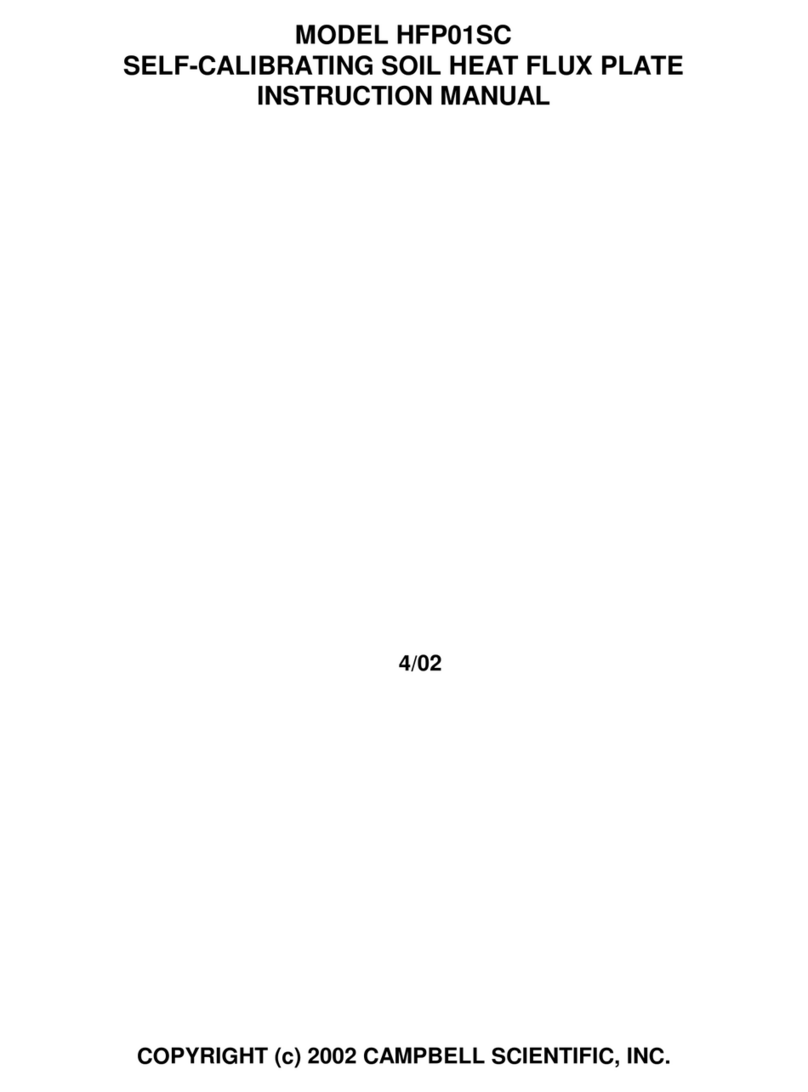
Campbell
Campbell HFP01SC instruction manual
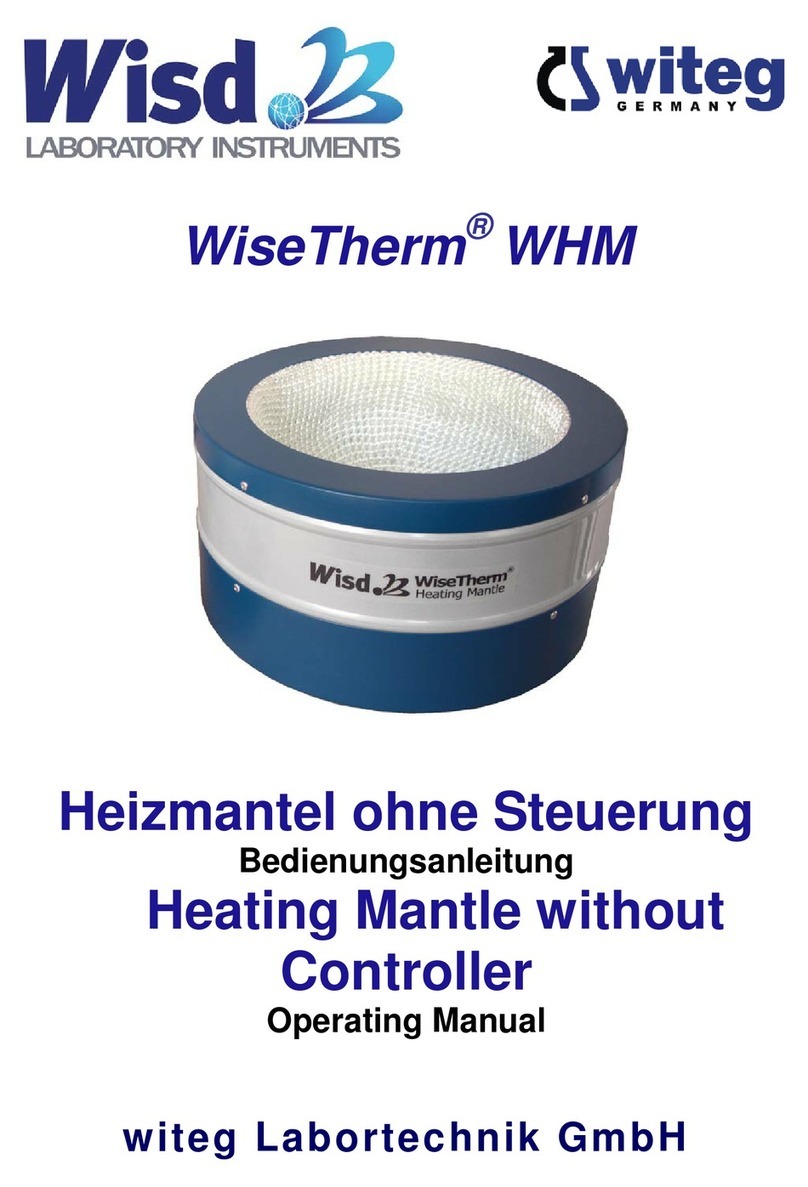
Wisd
Wisd WiseTherm WHM operating manual
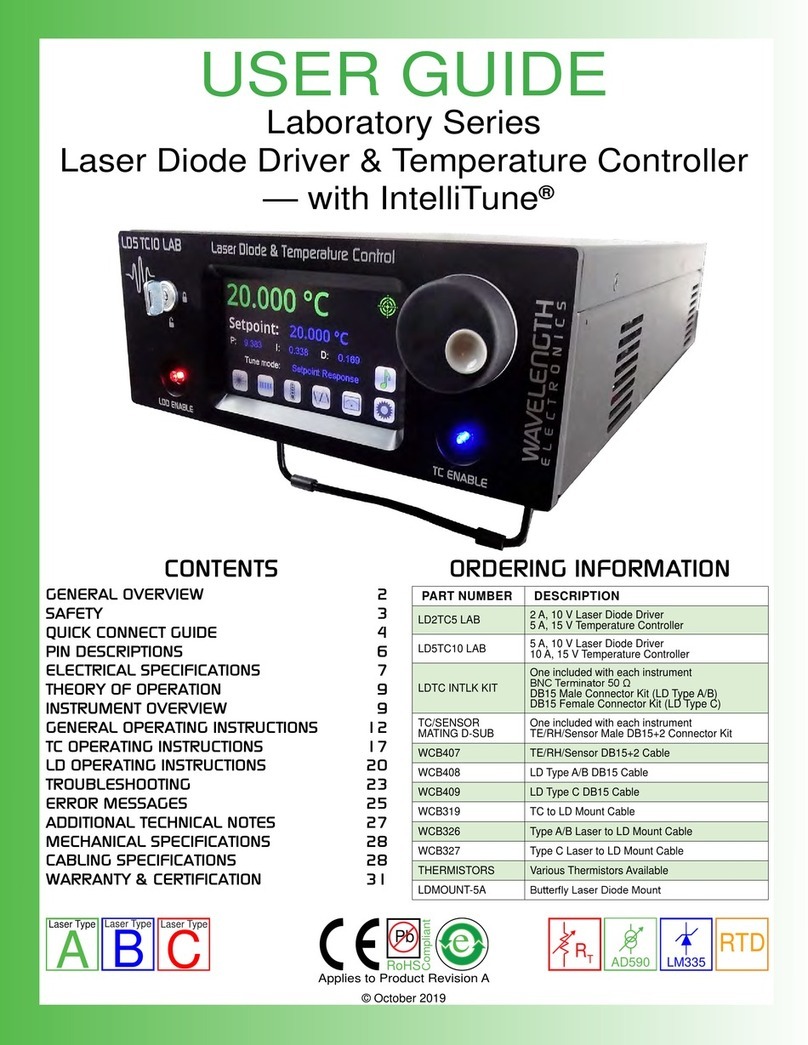
Wavelength Electronics
Wavelength Electronics LD2TC5 LAB user guide
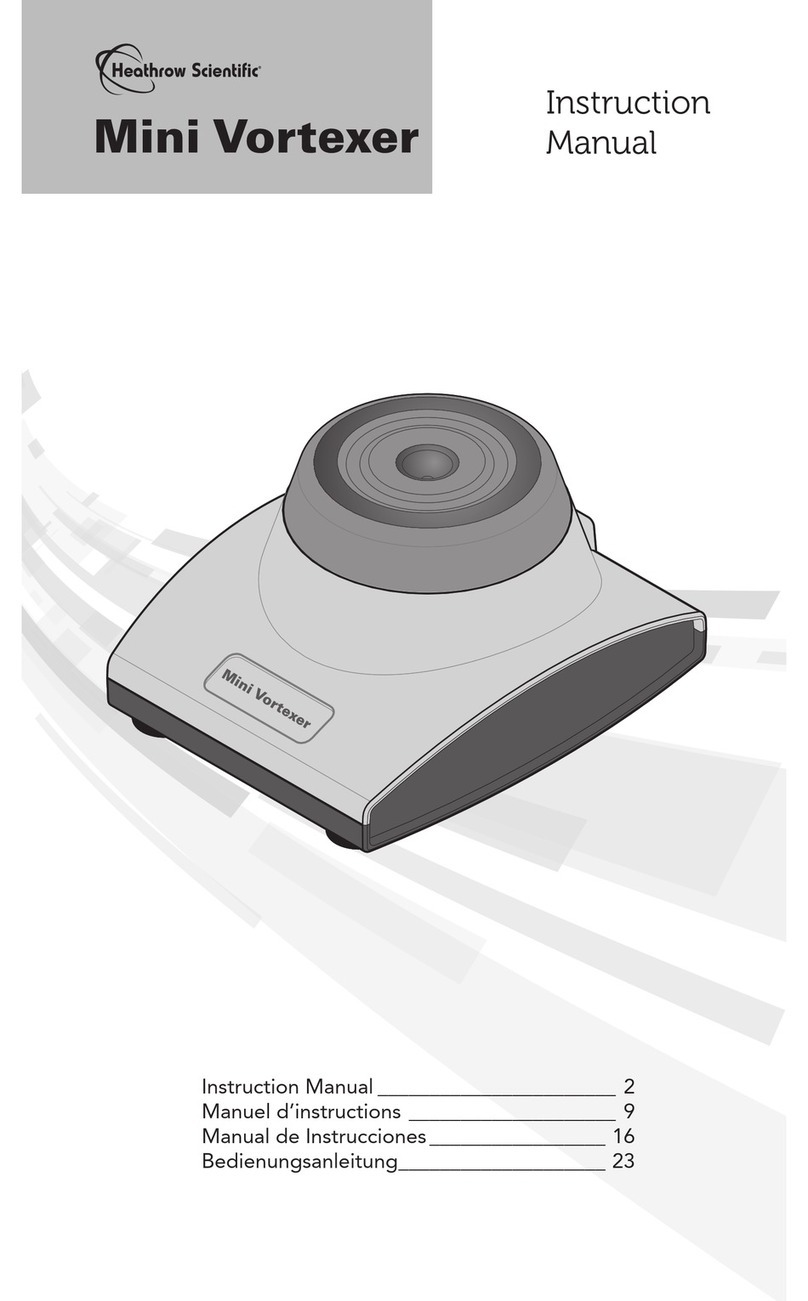
Heathrow Scientific
Heathrow Scientific Mini Vortexer instruction manual
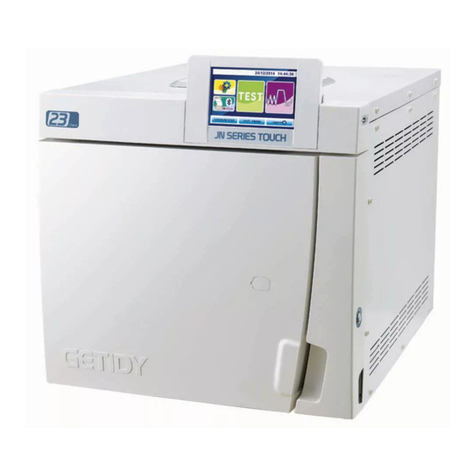
Getidy
Getidy KD Series instruction manual

Fisher Scientific
Fisher Scientific accumet AR50 user manual
